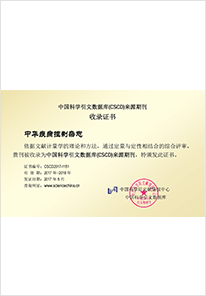2020 Vol. 24, No. 10
Display Method:
2020, 24(10): 1117-1119, 1236.
doi: 10.16462/j.cnki.zhjbkz.2020.10.001
Abstract:
2020, 24(10): 1120-1123.
doi: 10.16462/j.cnki.zhjbkz.2020.10.002
Abstract:
2020, 24(10): 1124-1128.
doi: 10.16462/j.cnki.zhjbkz.2020.10.003
Abstract:
2020, 24(10): 1129-1133.
doi: 10.16462/j.cnki.zhjbkz.2020.10.004
Abstract:
2020, 24(10): 1134-1138.
doi: 10.16462/j.cnki.zhjbkz.2020.10.005
Abstract:
2020, 24(10): 1139-1143.
doi: 10.16462/j.cnki.zhjbkz.2020.10.006
Abstract:
2020, 24(10): 1144-1148.
doi: 10.16462/j.cnki.zhjbkz.2020.10.007
Abstract:
2020, 24(10): 1160-1164.
doi: 10.16462/j.cnki.zhjbkz.2020.10.010
Abstract:
2020, 24(10): 1165-1169.
doi: 10.16462/j.cnki.zhjbkz.2020.10.011
Abstract:
2020, 24(10): 1170-1174, 1201.
doi: 10.16462/j.cnki.zhjbkz.2020.10.012
Abstract:
2020, 24(10): 1185-1189.
doi: 10.16462/j.cnki.zhjbkz.2020.10.015
Abstract:
2020, 24(10): 1190-1194.
doi: 10.16462/j.cnki.zhjbkz.2020.10.016
Abstract:
2020, 24(10): 1195-1201.
doi: 10.16462/j.cnki.zhjbkz.2020.10.017
Abstract:
2020, 24(10): 1202-1208.
doi: 10.16462/j.cnki.zhjbkz.2020.10.018
Abstract:
2020, 24(10): 1209-1214.
doi: 10.16462/j.cnki.zhjbkz.2020.10.019
Abstract:
2020, 24(10): 1215-1218.
doi: 10.16462/j.cnki.zhjbkz.2020.10.020
Abstract:
2020, 24(10): 1219-1223.
doi: 10.16462/j.cnki.zhjbkz.2020.10.021
Abstract:
2020, 24(10): 1224-1227.
doi: 10.16462/j.cnki.zhjbkz.2020.10.022
Abstract:
2020, 24(10): 1233-1236.
doi: 10.16462/j.cnki.zhjbkz.2020.10.024
Abstract:
2020, 24(10): 1237-1240.
doi: 10.16462/j.cnki.zhjbkz.2020.10.025
Abstract:


 Email alert
Email alert RSS
RSS Abstract
Abstract HTML
HTML PDF
PDF





